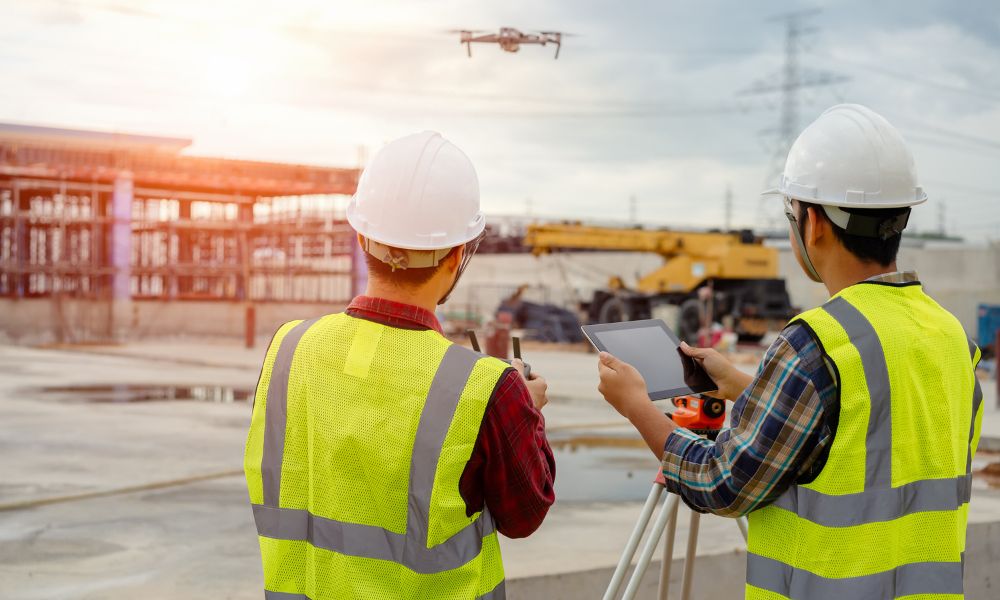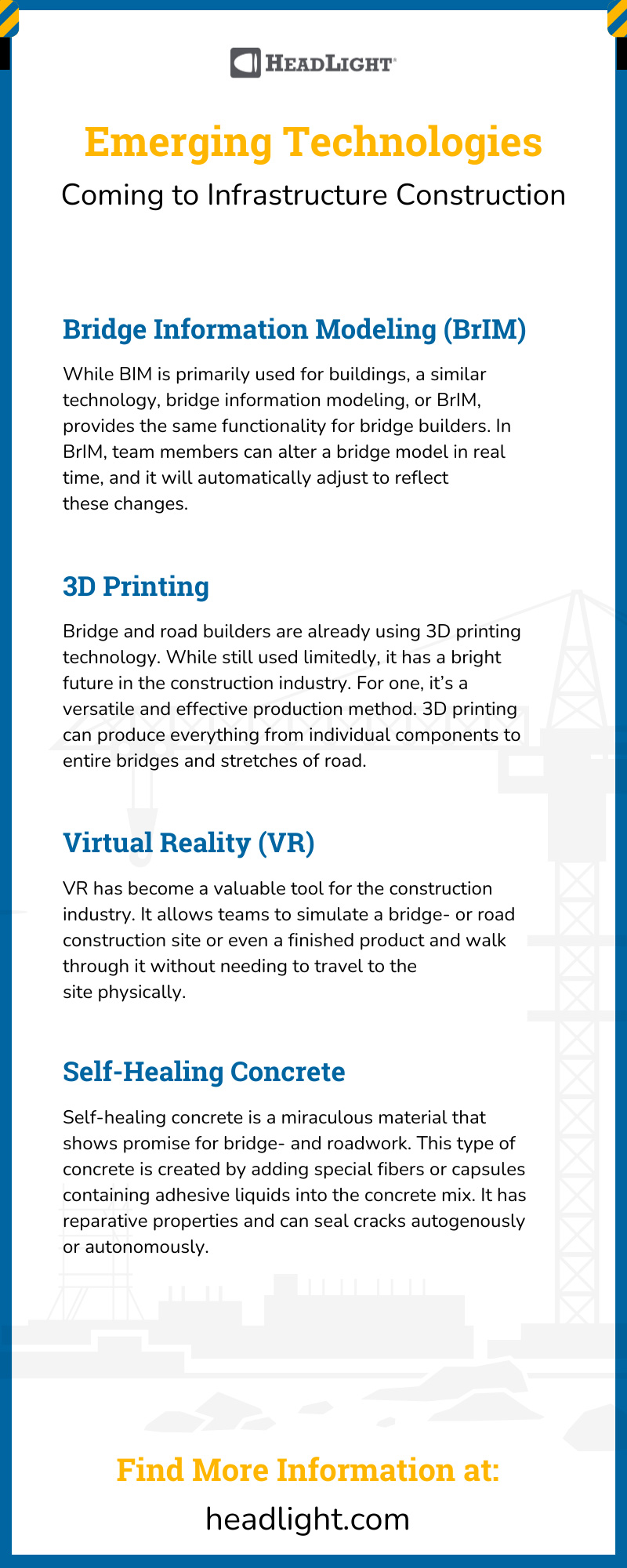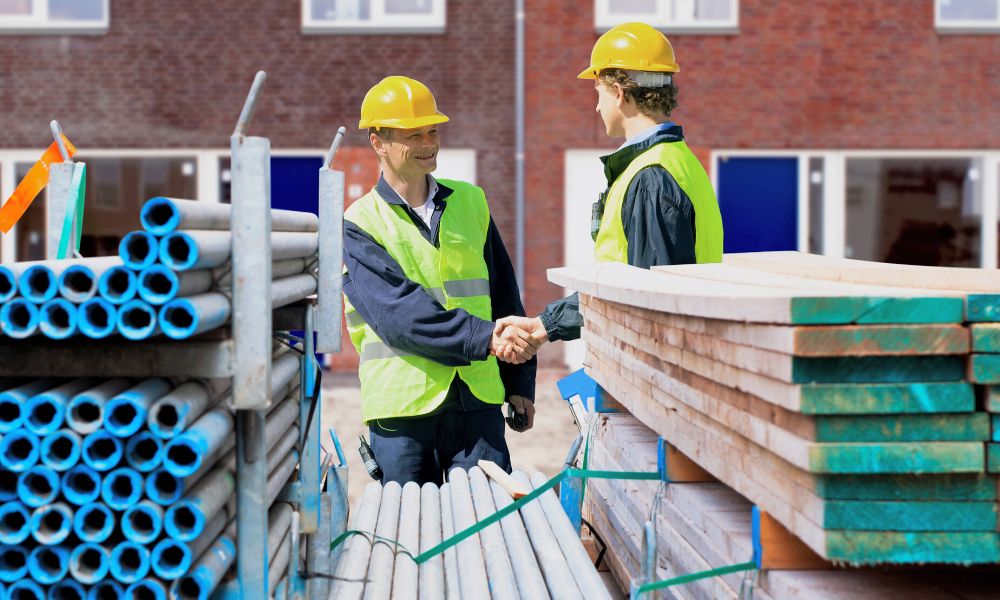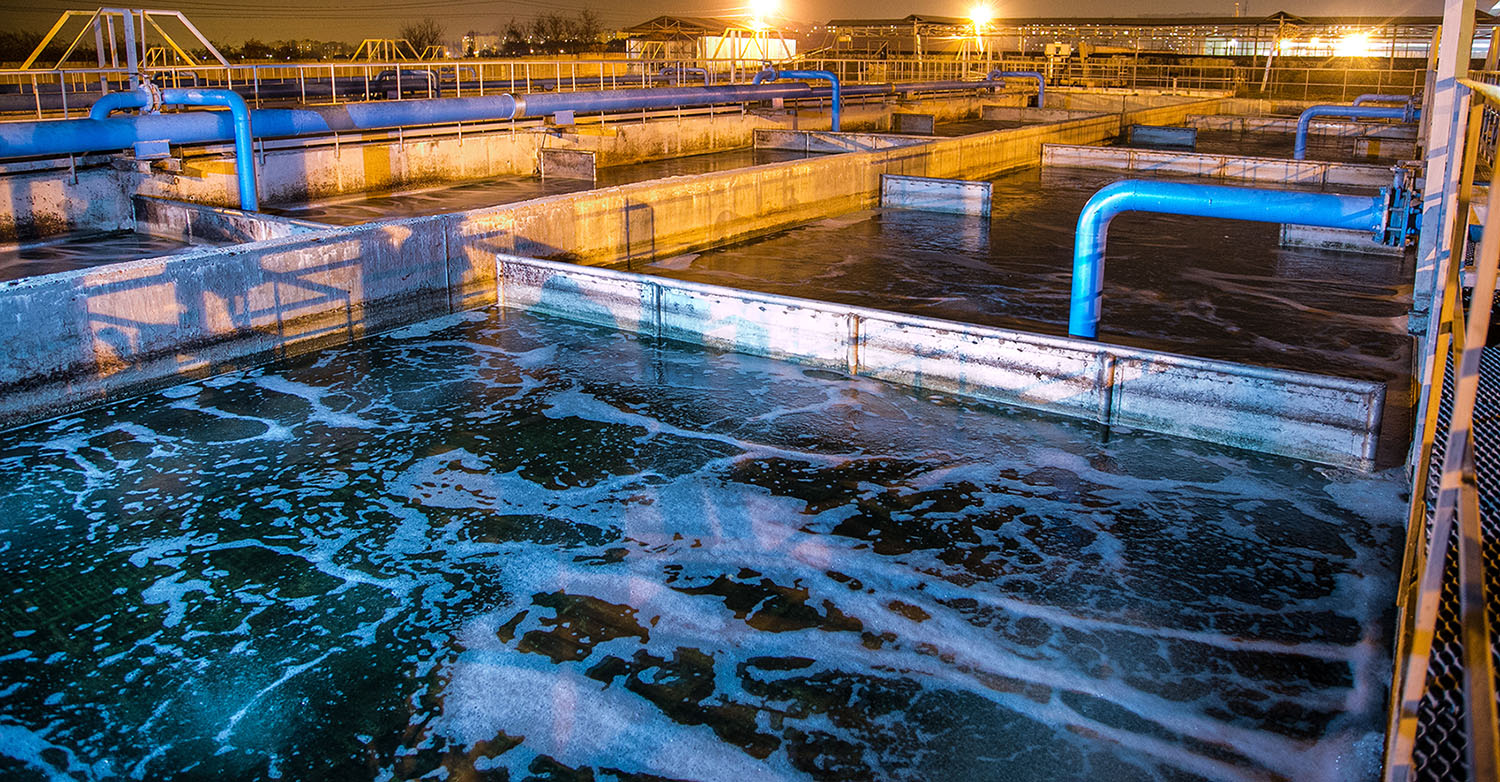
We live in a fast-paced, technology-driven era, and new technologies emerge that affect the way we live and work each year. The infrastructure construction industry, in particular, has seen great innovation this year. They’ve recently adopted tools like 3D printing, virtual reality, and self-regenerating materials that change how construction teams gather data, communicate, and build. If you want to learn more about what the future of the industry holds, here are six emerging technologies coming to infrastructure construction and why you should keep an eye on them.
Bridge Information Modeling (BrIM)
Building information modeling, or BIM for short, is an intelligent process that allows architects, contractors, and engineers to collaborate on the construction, design, and operation of a building. It provides a centralized database where everyone can work remotely on the same building model.
While BIM is primarily used for buildings, a similar technology, bridge information modeling, or BrIM, provides the same functionality for bridge builders. In BrIM, team members can alter a bridge model in real time, and it will automatically adjust to reflect these changes. If a change affects another user’s contribution, BrIM will highlight these incompatibilities, allowing teams to make compatibility adjustments in the preconstruction phase when they’re less costly and time-consuming. This method of communication and collaboration allows for more accurate cost estimations, better team coordination, improved scheduling, and reduced safety risks.
3D Printing
Bridge and road builders are already using 3D printing technology. While still used limitedly, it has a bright future in the construction industry.
For one, it’s a versatile and effective production method. 3D printing can produce everything from individual components to entire bridges and stretches of road. For example, the Eindhoven University of Technology in the Netherlands used 3D printing to construct a 26-foot bridge reinforced by steel cables. And a group of architects in China installed an impressive 86-foot-long bridge in Shanghai back in 2019. As you can see, it functions excellently for both small-scale and large-scale projects.
Another plus is that 3D printing is sustainable. 3D printing produces materials using fewer labor resources than traditional manufacturing and produces far less waste.
3D printing can also improve productivity by eliminating human error and limitations. The printing process is entirely automated, so errors are rare as long as workers maintain the equipment. And unlike humans, machines don’t need to rest and can produce 24/7.
Virtual Reality (VR)
Another emerging technology in infrastructure construction is virtual reality (VR). While most associate virtual reality with the video game industry, its applications stretch far beyond that.
Recently, VR has become a valuable tool for the construction industry. It allows teams to simulate a bridge- or road construction site or even a finished product and walk through it without needing to travel to the site physically. This provides clients and shareholders with a realistic idea of the conditions and challenges they could potentially face on-site or how the bridge or road will look and function once complete. In addition, it allows teams to collaborate in real time, pointing out details and problems, asking questions, and making decisions.
A team can limit the number of changes they must make during construction by understanding what they’re working with and how a project should turn out. They can also discuss strategies and changes prior to breaking ground. This translates into less work, fewer delays, and a greater chance of a project finishing within the projected budget and schedule.
Self-Healing Concrete
Self-healing concrete is a miraculous material that shows promise for bridge- and roadwork. This type of concrete is created by adding special fibers or capsules containing adhesive liquids into the concrete mix. It has reparative properties and can seal cracks autogenously or autonomously.
To some, this may sound incredibly futuristic and unfeasible, but concrete has always had natural healing properties. It’s not uncommon for small cracks in concrete to heal over time due to hydrated clinker materials or the carbonation of calcium hydroxide. Self-healing concrete expands on these natural properties and seeks to use them to repair larger and smaller cracks.
While this unique material is still in the research and testing stages, should it come to fruition, it would reduce the amount of maintenance that bridges and roads require substantially. They would retain their appearance and structural integrity for longer without human intervention, resulting in less work for contractors and safer travel for all.
Prefabrication
Prefabrication is the process of constructing parts off-site, typically at a manufacturing facility, and transporting them to the construction site later on for assembly. Prefabrication is valuable to the bridge and road infrastructure industry because it eliminates or mitigates delays due to extreme weather or other unpredictable circumstances.
Imagine: a severe thunderstorm batters a construction site, leaving ankle-deep pools of water and strewn debris in its wake. The site is deemed too dangerous to work on until the water subsides and the debris is tidied up. Situations like this can stall work for days or even weeks. But thanks to prefabrication, companies can have components made regardless of external factors. And they’ll be ready to piece together as soon as construction staff returns to the site.
Data Collection Apps
Thanks to the commonality and portability of devices like smartphones and tablets, apps are becoming increasingly popular in the infrastructure construction industry. Data collection apps allow construction companies to quickly and reliably collect, share, and act on data from anywhere. Using cloud-based data insights, they can spot trends across projects and regions and use this information to streamline their operations. They can track suppliers to see which are delivering and which aren’t, identify potential safety hazards and reduce worker risk, and much more. And because these apps store data in the cloud, they make information less vulnerable to cyberattacks, providing peace of mind that client and company data remains secure.
As times change and technologies evolve, construction companies need to modernize as well. Help your company take its first step into the future by outfitting your team with cloud-based construction management software from HeadLight. Our easy-to-use, innovative software improves communication between teams and allows you to collect and share accurate, high-quality data that will help your team make informed decisions regarding your projects. Contact us today for more information or to request a free demo of our software.



